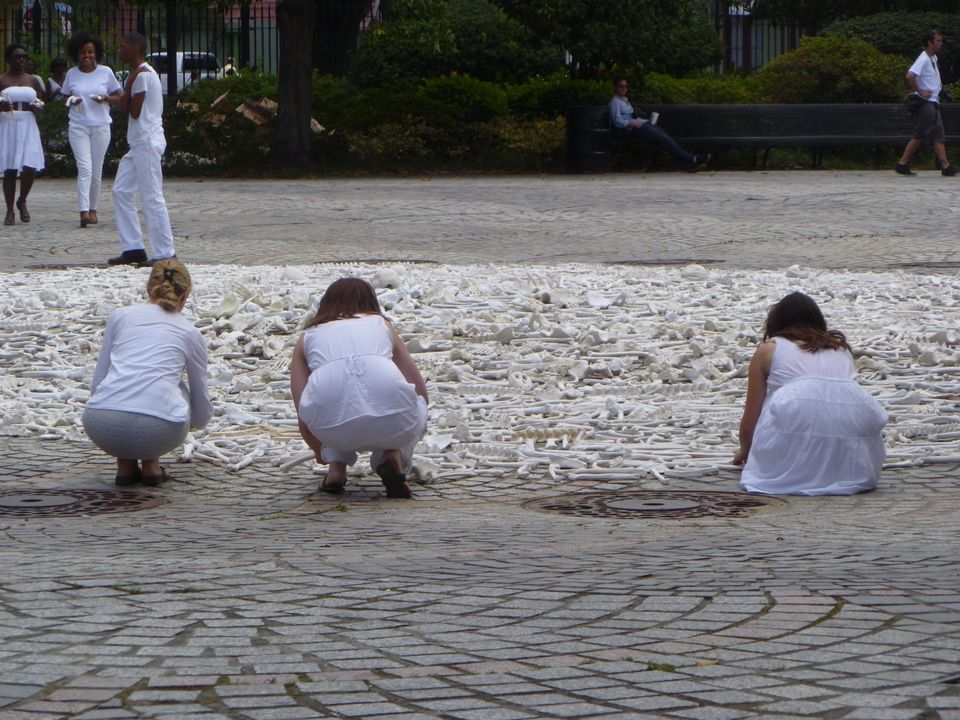On a humid Saturday, June 8, one million bones created by students, educators, artists and activists were laid on the National Mall in Washington, D.C. as a visual petition to end genocide and mass atrocities. From 3 Street to 7 Street, onlookers in our nation's capital saw a living memorial take shape that was evocative of a mass grave. The One Million Bones project was also representative of a global movement that united young people across 31 countries and all 50 United States to take a stand against humanitarian crises and shed light on suffering that often goes unseen. In the words of one 13-year-old, "I hope people see it and say, we are all the same underneath."
When I imagine that every bone reflects someone's heartfelt intention, and then multiply that intention by 1,000,000, I'm overcome with humility and a profound sense of possibility. Young people are our greatest creative resource. Our opportunity is to explore how their energy and optimism can be fueled--and focused--to benefit the world's most pressing issues. Inspired by the vision of founding artist Naomi Natale, Students Rebuild and its partners, including CARE, Global Nomads Group, Architecture for Humanity and the One Million Bones project, issued a creative call to action that would amplify the effort in bold and unexpected ways.
From Argentina to Saudi Arabia, more than 1,300 Students Rebuild teams came together to craft bones from clay, paper, wood, and other materials for the One Million Bones challenge. Young people expressed their solidarity with peers in places such as the Democratic Republic of Congo, Somalia, Burma and Sudan, and connected their efforts to conflicts surfacing in Syria and other places. As caches of handmade bones piled up around the country, UPS joined the effort by taking on the major logistical feat of transporting 130,000 pounds of bones from 45 locations across North America.
Students who participated saw their actions matched with funding for CARE's education and job training in countries acutely affected by mass atrocities. They also experienced firsthand the impact of their contribution through live videoconferences and webcasts with peers in Eastern Congo organized by Global Nomads Group. Together, Students Rebuild teams contributed half of the bones for the One Million Bones installation, generating $500,000 for CARE's lifesaving work.
Direct beneficiaries of this project include hundreds of Somali and Congolese students who gained educational opportunities through CARE. And all participants worldwide benefited from the experience of taking action and sharing stories with their peers across the world.
By issuing a creative call to action and monetizing that action with funding, Students Rebuild and its partners provided a platform for young people to deliver real and meaningful change. It's the kind of change that happens when we put our education into action by deepening our understanding of the issues, and each other.
